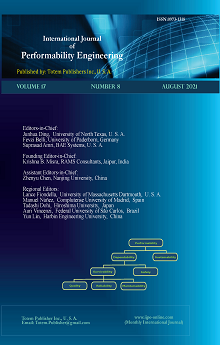-
Identifying Video Tampering using Watermarked Blockchain
- Padma Priya R, Aditya Tiwari, Ayush Pandey, and Siddharth Krishna
-
2021, 17(8):
722-732.
doi:10.23940/ijpe.21.08.p8.722732
-
 Abstract
Abstract
 PDF (877KB)
PDF (877KB)

-
References |
Related Articles
Nowadays, it is clearly notable that crime percentages and burglaries are predominantly increasing. Therefore, the need for video clues and evidence are becoming more important than ever before. These clues not only have a significant impact in recognizing the burglary but also aid in conviction of the individuals engaged in the foul demonstration. When such video clues have more and more significance, the likelihood of evidence getting altered is alarmingly high. Towards this end, there is a serious need to ensure the validity of crime proof. We have proposed an enhanced encrypted watermarking technique which can recognize tampering in strong video proofs. A blockchain is where the previous chain of blocks is associated with the following blocks through encryption. Any block absent in the middle of the chain can confirm that the blockchain is altered. In our proposed work, the video's frame rate and duration are first segmented into frames. Among these frames, the first frame which is obtained is merged with the chosen watermark (genesis watermark) with the help of image processing techniques, namely Logistic mapping, Integer Wavelet Transform (IWT), and singular value decomposition (SVD), respectively in a sequential manner. Such an encoded frame is chosen and duly applied as a watermark for the second frame. This procedure is repeated for all the other consecutive frames, resulting in the blockchain-like structure in the to-be authenticated video. If in any circumstances the video proof is altered (morphed or removal of frame), our proposed algorithm is capable to aid the investigators in determining not only the frames but also the timestamp in the video where its integrity was breached. We were able to attain both functional and non-functional achievements. Referring to the non-functional requirement, our watermarked video was acquiring same memory usage before and after the encryption process. Hence, our work can be considered as a lightweight technique and we were able to identify tampers in video evidence with 97% confidence interval. To the best of our knowledge, our work will be the first work wherein a blockchain-like watermarking technique is proposed for identifying breaches in video evidence. Our algorithm is applicable to video surveillance-based applications in smart cities and any other CCTV recordings.

